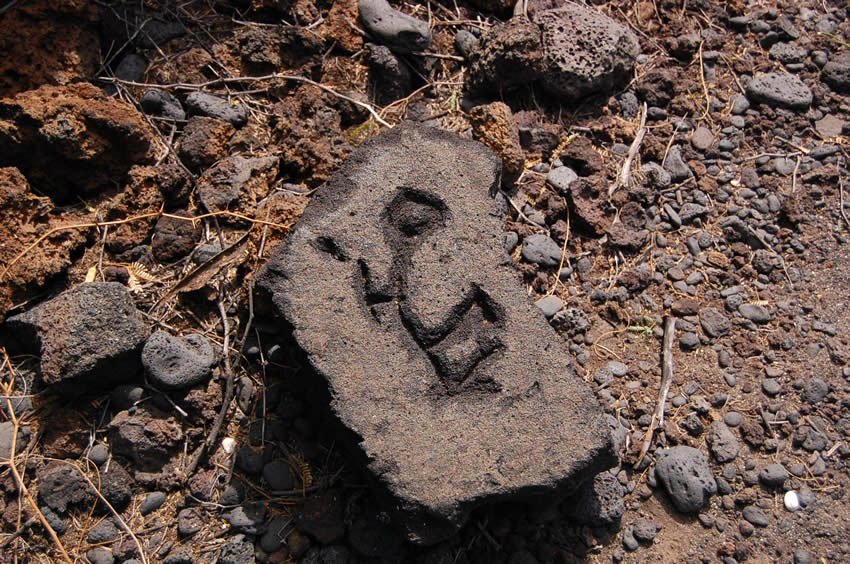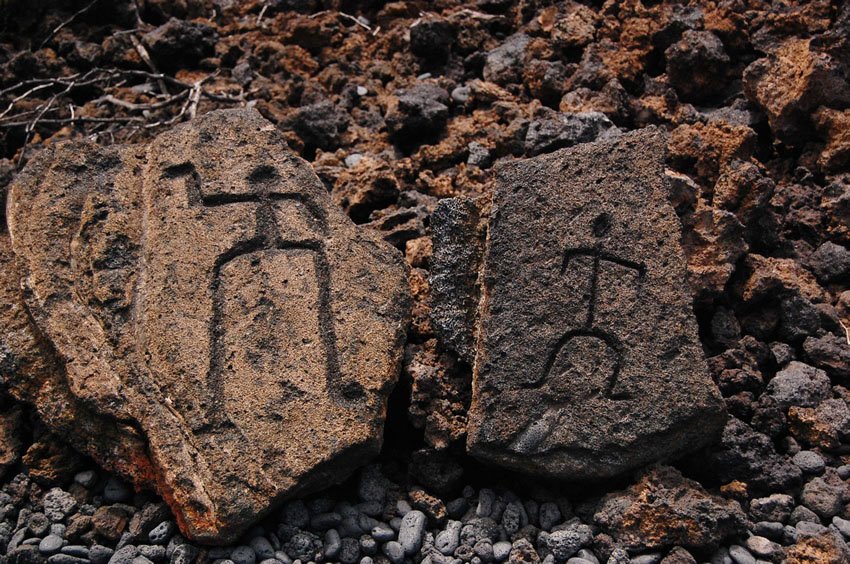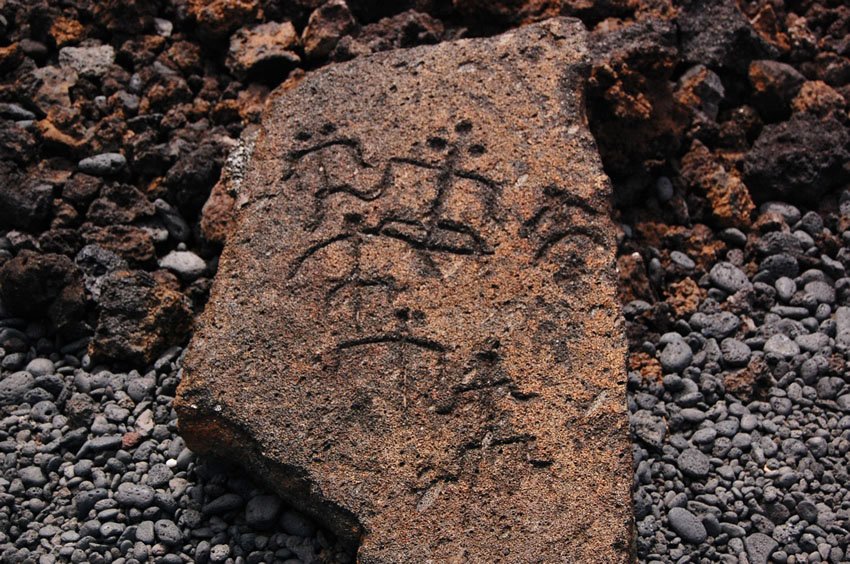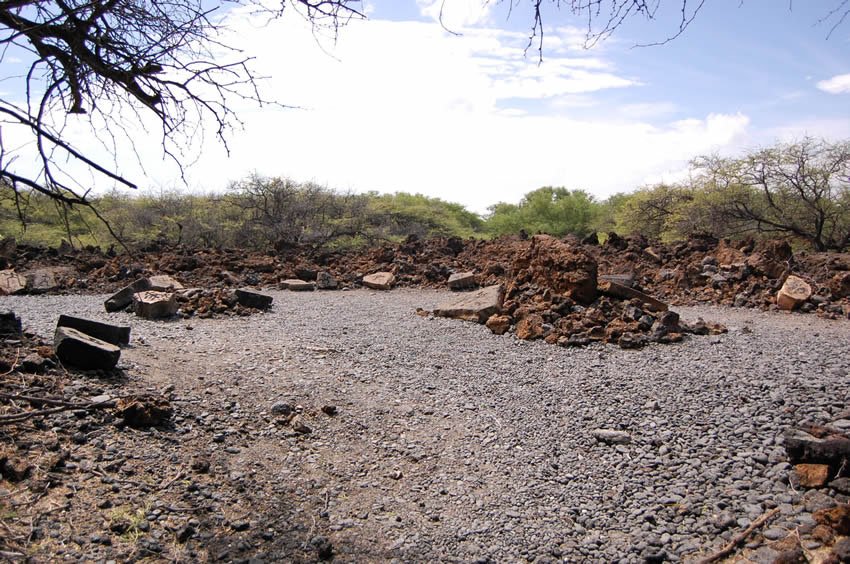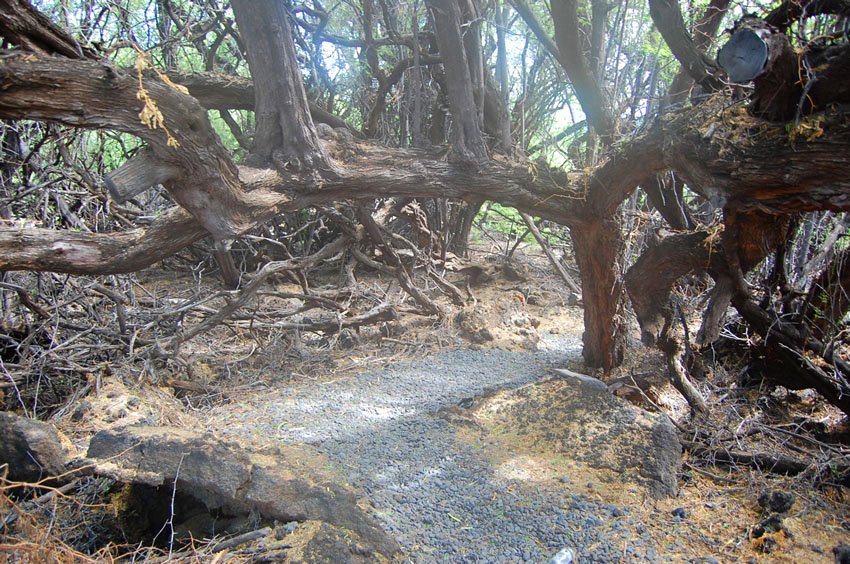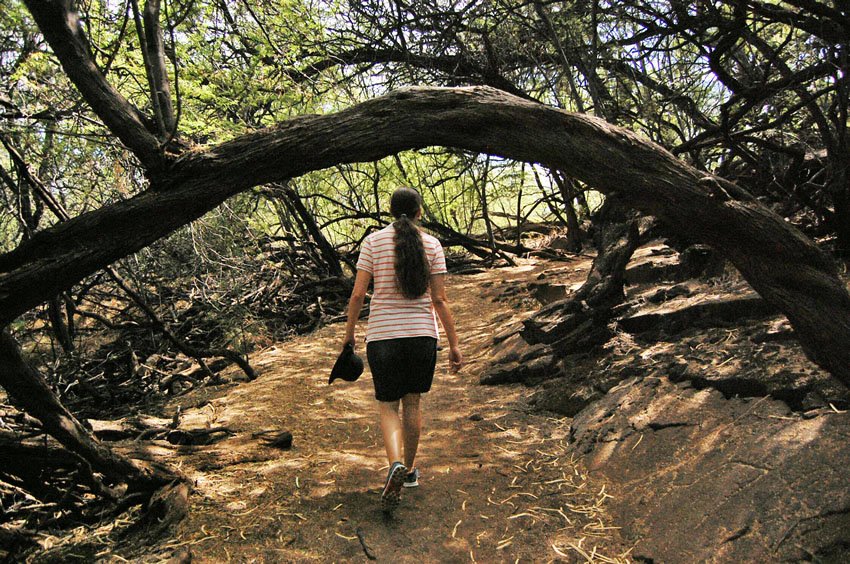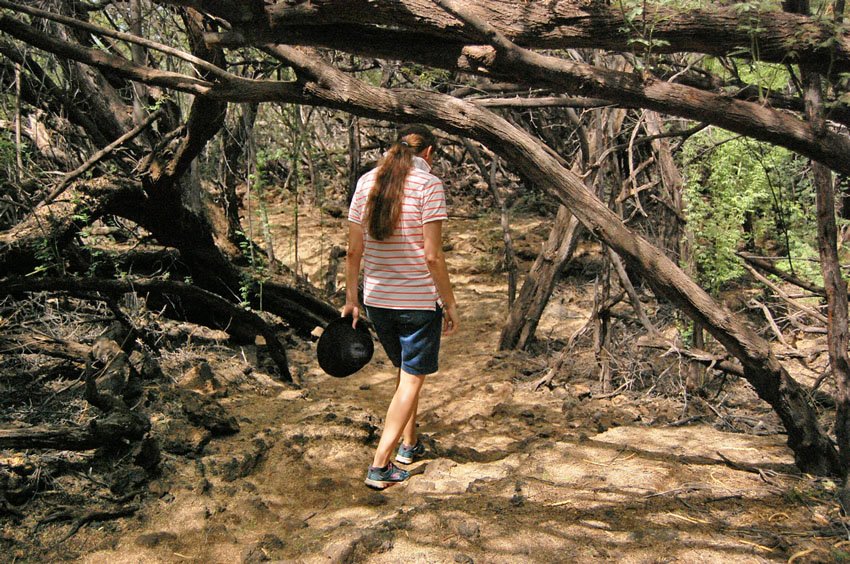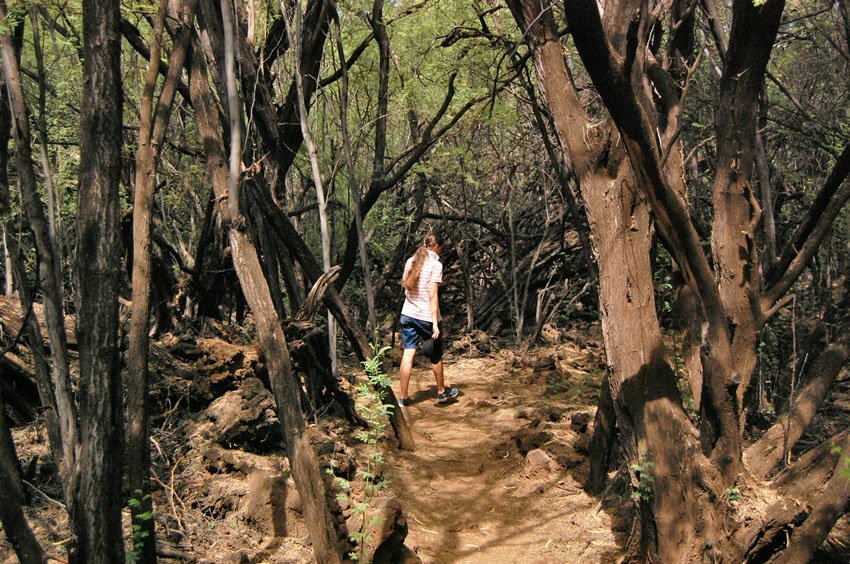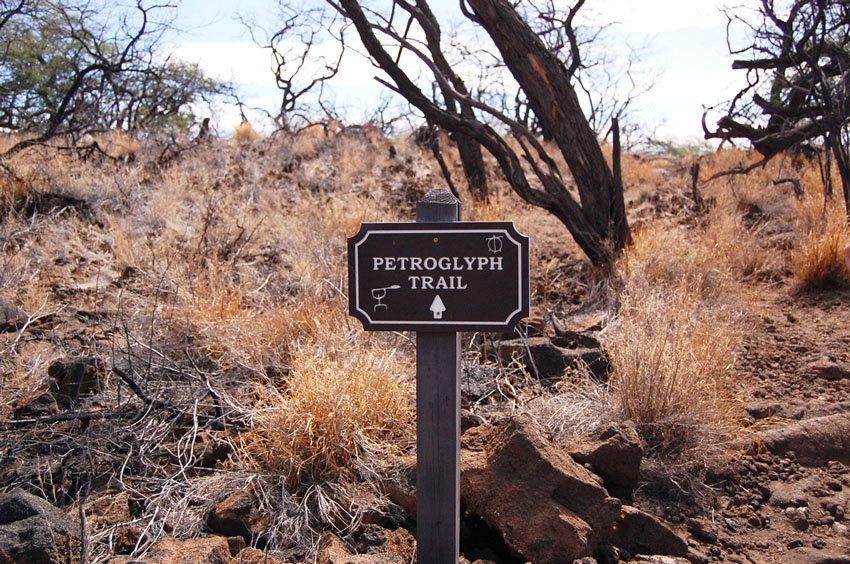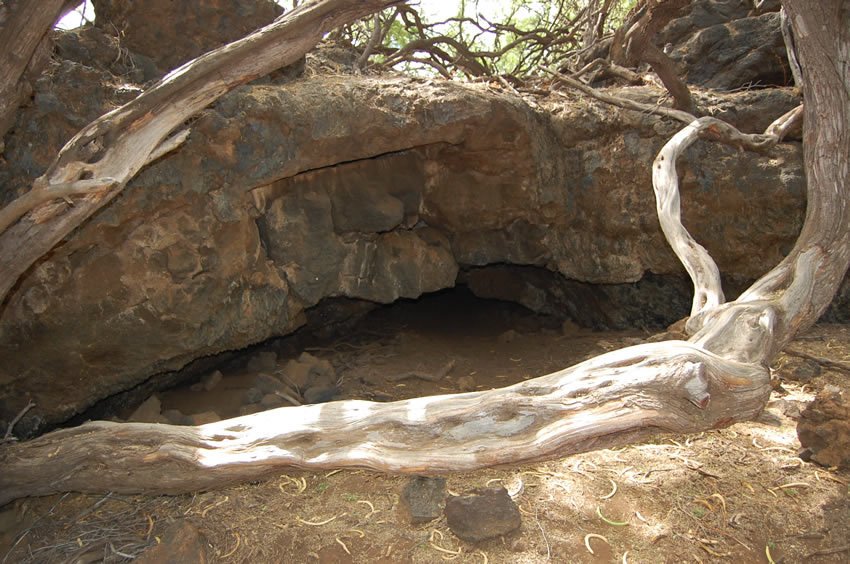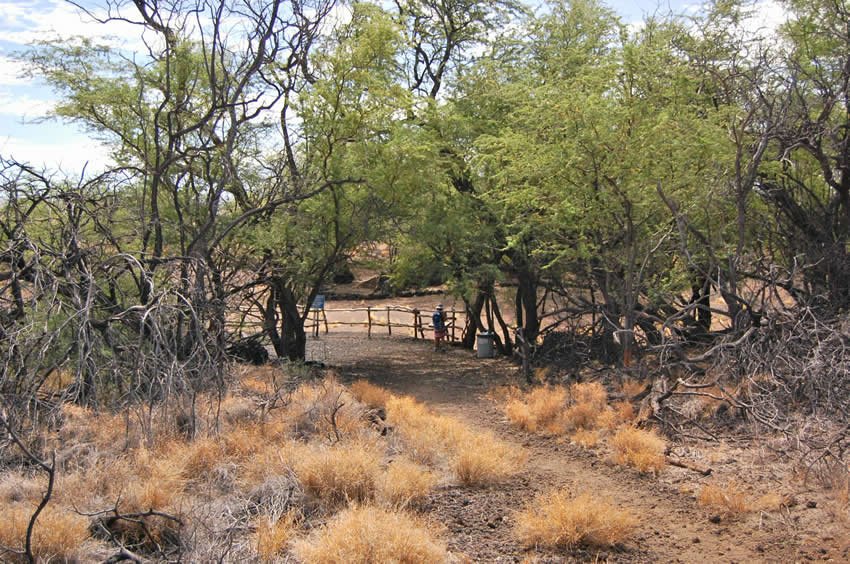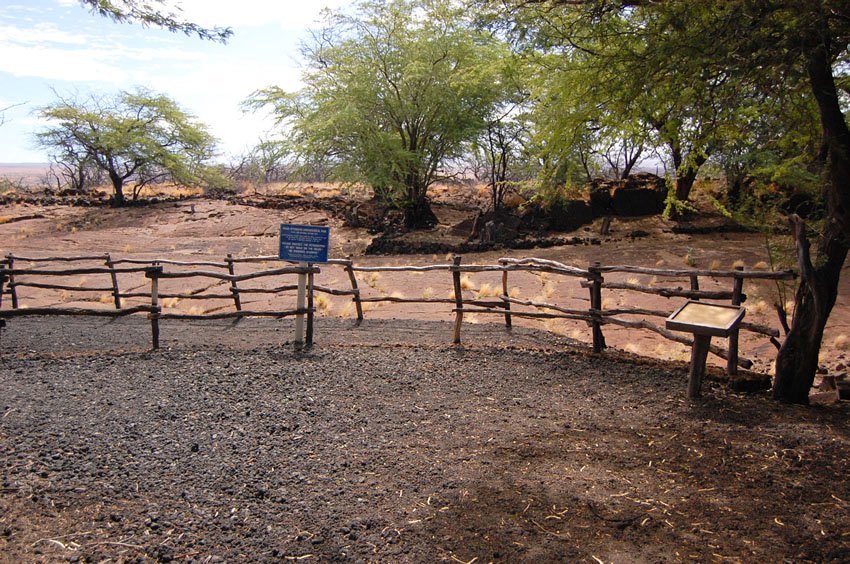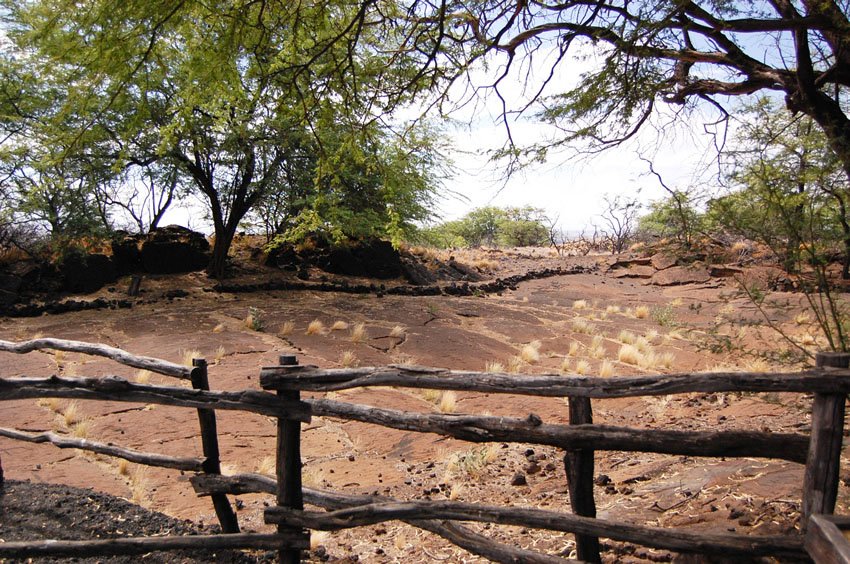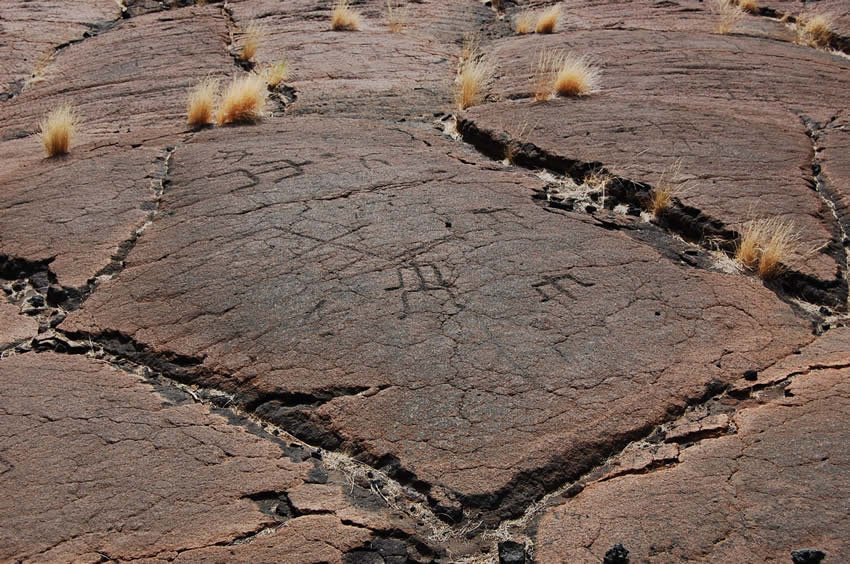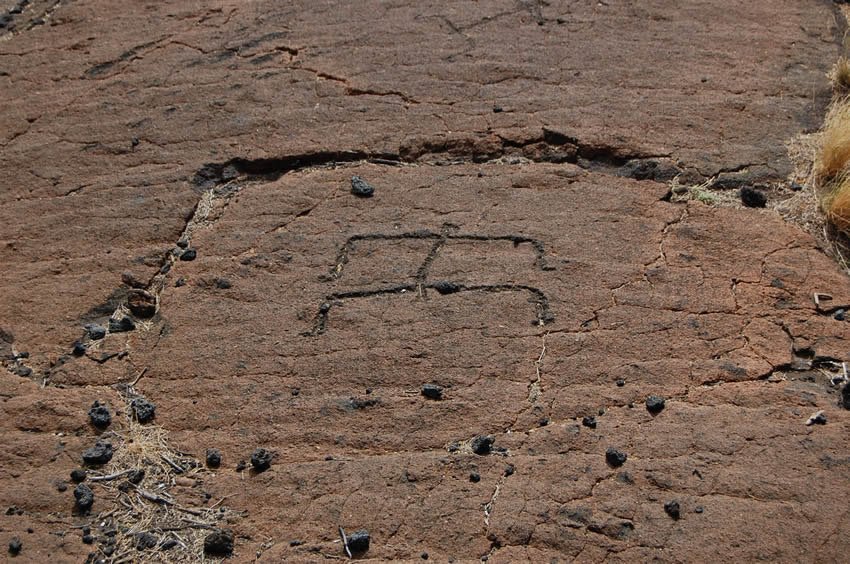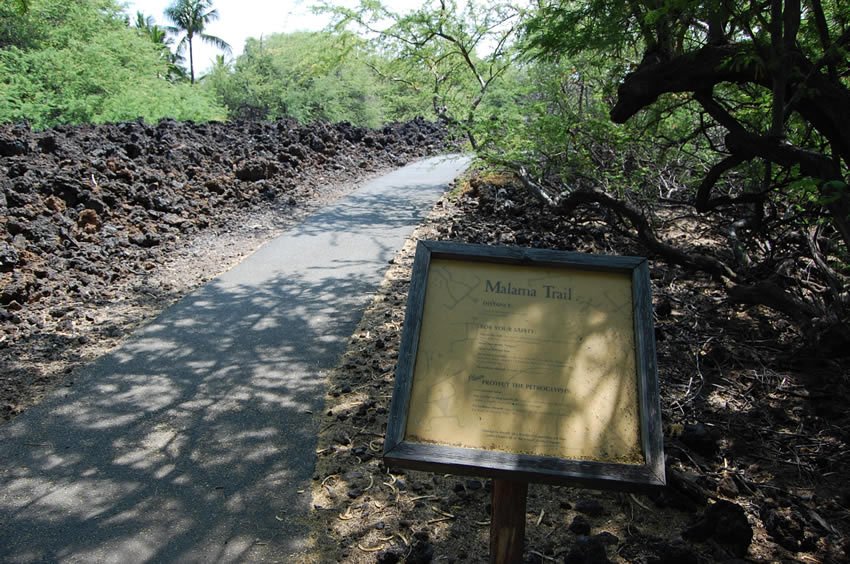Puako Petroglyph Archaeological Preserve
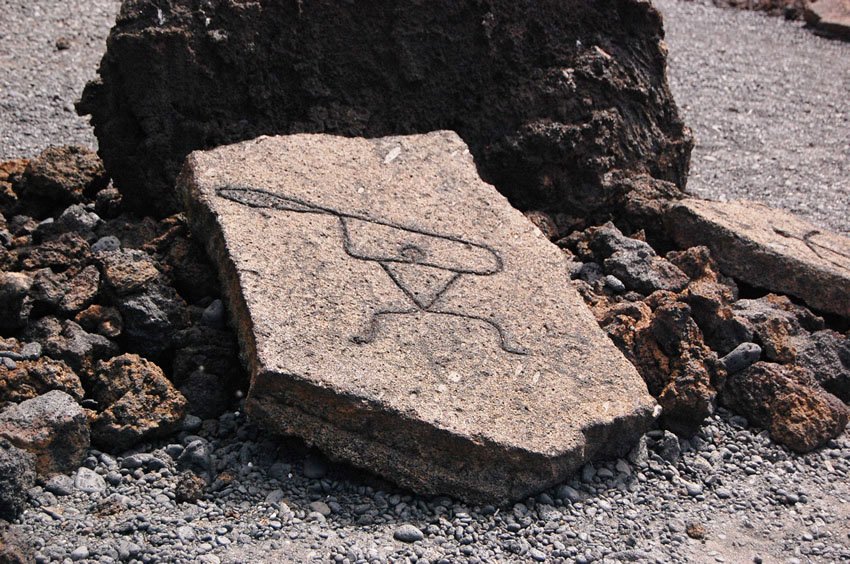
Puako Petroglyph Archaeological Preserve is one of the largest petroglyph fields in Hawaii, featuring more than 3,000 ancient Hawaiian rock carvings etched into lava rock. Located on the Big Island's Kohala Coast near Holoholokai Beach Park, the preserve is accessed via the Malama Trail. The petroglyphs, or ki'i pohaku, depict people, animals, canoes, and symbolic patterns, offering insight into Hawaiian life, rituals, and spirituality between 1000 and 1800 A.D.
Puako Petroglyphs, Big Island
Located on the Big Island's Kohala Coast near (view panorama) × features more than 3,000 ancient Hawaiian rock carvings. The carvings show figures of humans, paddlers, marchers, as well as turtles, dogs, chickens and deity symbols. They are believed to have been carved between 1000 and 1800 A.D. The ancient Hawaiians called their stone art ki'i pohaku, which literally means "images in stone."
Many of the carvings are puka, which are cup marks and dots. These played a role in postbirth rituals. The piko, or umbilical cord stump, of the newborn was placed in a hole in the rock and a stone was put on top of it. It was believed that this would be beneficial for the child since this created helpful mana (spiritual energy).
Key Features of Puako Petroglyphs
- Over 3,000 petroglyphs: Includes human figures, paddlers, animals, deity symbols, and ceremonial carvings
- Postbirth rituals: Piko (umbilical stumps) were placed in holes to invoke protective mana for newborns
- Ancient artistry: Carvings believed to date from 1000 to 1800 A.D., created by skilled early Hawaiians
- Malama Trail access: A 1.5-mile roundtrip hike through a kiawe forest leads to the main petroglyph field
- Replica petroglyphs: Visitors can view and touch educational replicas near the trailhead
- Cultural preservation: Touching or walking on actual petroglyphs is prohibited to prevent damage



Frequently Asked Questions
What are petroglyphs?
Petroglyphs are rock carvings made by ancient Hawaiians, known as ki'i pohaku, which depict people, animals, and spiritual symbols.
How do I access the petroglyph field?
Take the Malama Trail from Holoholokai Beach Park parking lot. It's an unpaved 1.5-mile roundtrip walk through kiawe trees.
Can I touch the petroglyphs?
No. Visitors are asked not to touch or walk on the petroglyphs to preserve them. However, replica carvings near the start of the trail may be touched.
Where is the site located?
The Puako Petroglyph Preserve is near Holoholokai Beach Park, behind the Mauna Lani Resort on the Kohala Coast of the Big Island.
Is it okay to take photos?
Yes, photography is allowed and encouraged - just remember to stay on marked paths and avoid damaging the rock carvings.
















